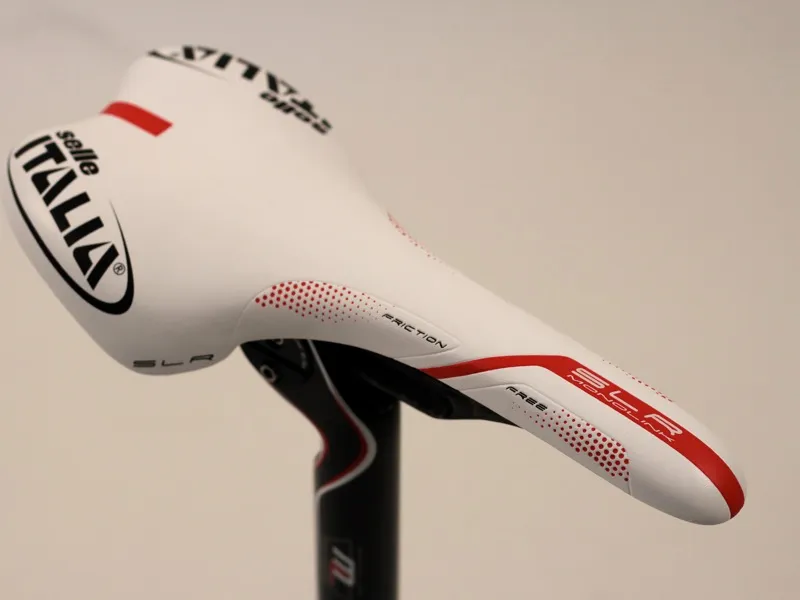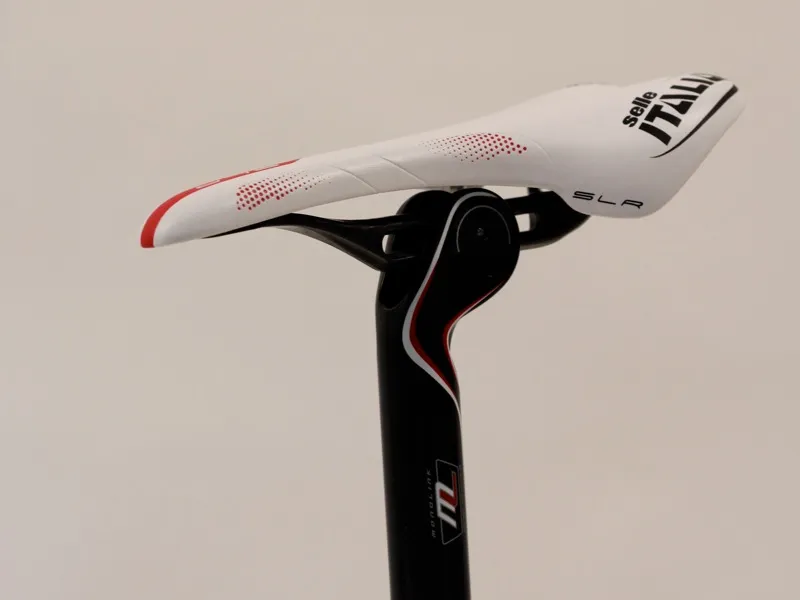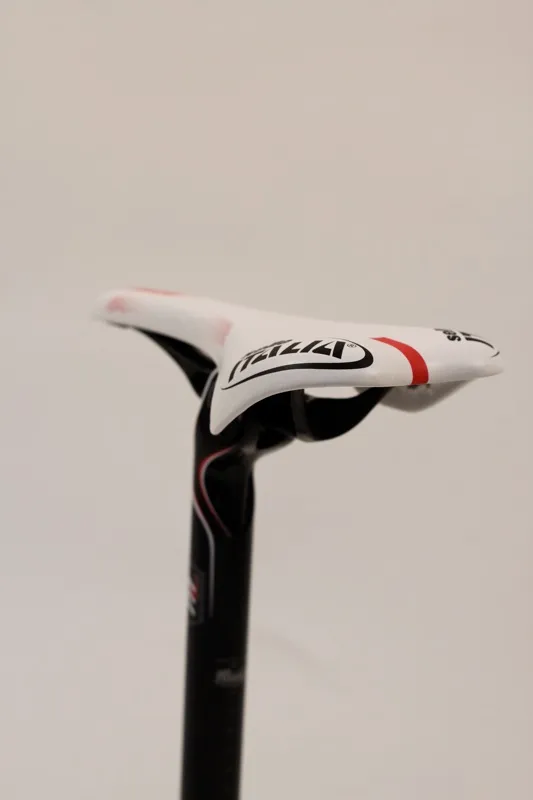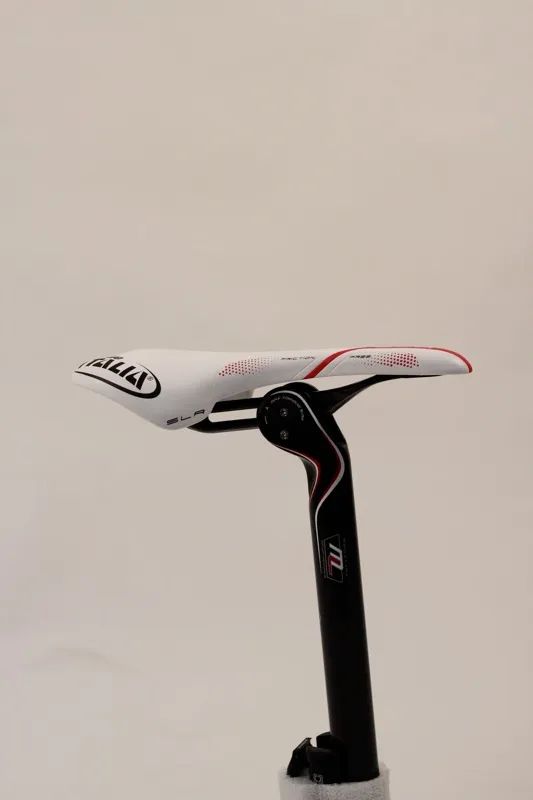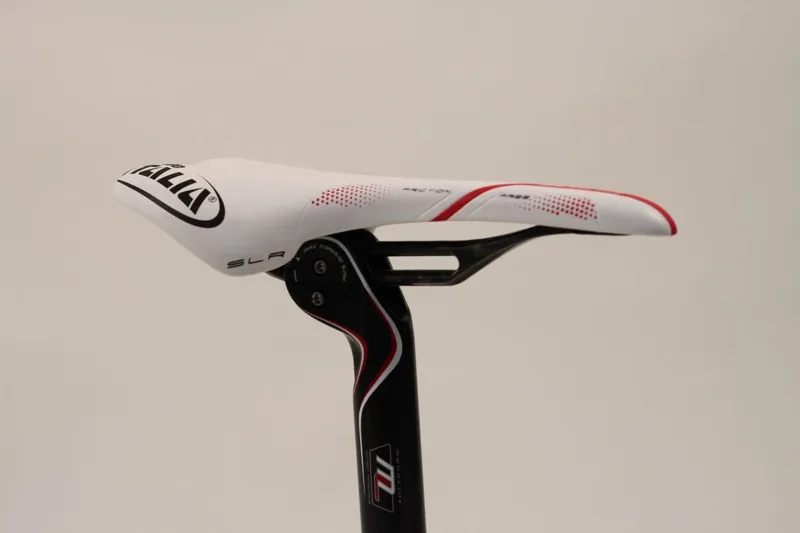Selle Italia’s new Monolink SLR saddle is unique in fit, form and function. While it doesn’t even come close to fitting or feeling like the brand’s benchmark SLR ultra-lightweight saddle, it’s quite comfortable and won us over after a few rides.
At the heart of the design is the Monolink. This is a single rail mounting system that offers more fore-aft adjustment than a standard twin rail setup, as well as allowing the use of a saddle with a very narrow profile.
The single rail is very stiff and, while the shell of the seat may not be any stiffer than standard, the combination of the two took a while to warm to. The SLR Monolink Team is, without doubt, a saddle for minimalists. We aren’t generally drawn to narrow saddles that prioritise weight over all else, but we were able to comfortably ride the new design after we'd gotten used to the unusual feel.
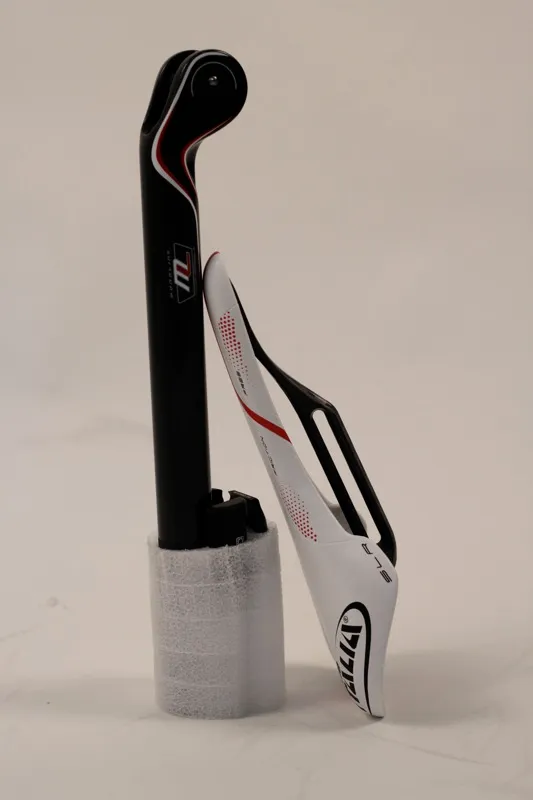
The Monolink rail is the heart of the new system
Friction Free = super-narrow nose
It's not just the single rail that lends the SLR Monolink Team its rigid feel; Selle Italia's Friction Free concept also has a part to play. This design takes a large length of the saddle’s nose and drastically reduces its width. While this is good for thigh clearane, reducing the possibility of chafing and possibly increasing power — pedaling does seem more free — it reduces the amount of usable surface area available to the rider.
Basically, we could only find one spot comfortable. Once we found that comfortable spot, we also found the SLR to be a somewhat precarious perch. The way the saddle curves in a convex manner toward its edges, paired with the firmness of the shell and padding, and the slippery cover, never gave us the stable feeling we enjoy with larger saddles.
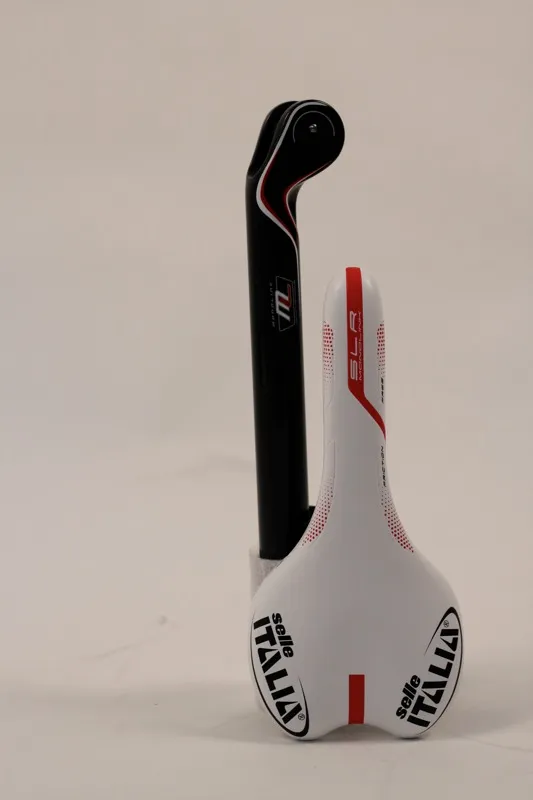
The sit zone is at the rear of the saddle due to the extremely narrow nose
The narrow sit zone also made the length of the saddle’s nose redundant, it could easily be 3-4cm shorter without affecting comfort. In a way, the Monolink SLR fits (or sits) a lot like the stub nosed ISM saddle even though the two look drastically different; both provide good sit bone support and an unimpeded space for the thighs to work. Shortening the nose would reduce the fore-aft adjustability, but might make it a viable option for time trialing — as it sits, it isn't.
Solid post
We found the robust 31.6mm Monolink post — which comes with two sets of clamp hardware, as to fit both Monolink and standard railed saddles — to be durable and reasonably easy to use. The clamp never slipped and didn’t creak, nor did the shaft of the post flex. The clamp is impressively narrow, which keeps it tucked out of the way.
Initial setup with the Monolink saddle is easy, but because the clamp uses a wedge system, which must be unseated to make adjustments, it's hard to make small changes. Saddle angle and position is infinitely fine-tunable but once the bolts are loosened and the wedge freed – generally, with a hard whack by your hand on the tip or tail of the saddle – you’re forced to start over, so we wouldn’t consider the system micro-adjustable.
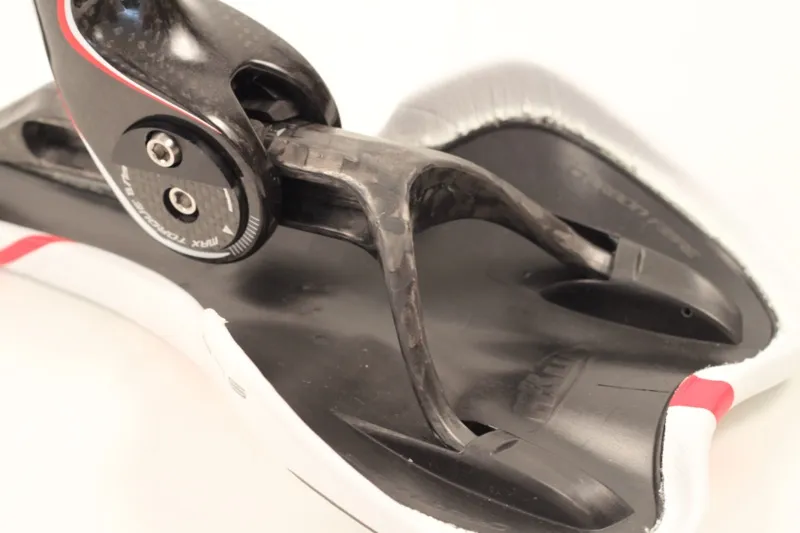
The Monolink wedge clamp and rail
Deal breakers?
While it ultimately proved comfortable, several factors make us hesitant to wholeheartedly recommend this Monolink setup. First, Selle Italia say it's lighter than a standard railed SLR and post, but on our scales, both saddle and post were considerably heavier than claimed. The 31.6x300mm post was 212g – 27g heavier – and the saddle was 151g – 11g heavier. In total, the package came in 38g overweight at 363g. For comparison, a Bontrager Race XXX Lite seatpost and Specialized Toupe saddle weigh 325g.)
Then there’s the price – well over US$600 ($319.99 for the Monolink post and $307.99 for the saddle) – which justifies using the term exorbitant. And finally, there’s the claim of power savings, which are hard to believe. Selle Italia claim a 0.7 watt saving per pedal stroke. Based on their calculations, that represents a 1kph increase in speed (from 38kph to 39kph) at 90rpm or a saving of 70w per minute.
We tried to authenticate that by pedalling with a set cadence of 90rpm on stationary rollers with the SLR Monolink Team, then comparing that result to a wider saddle like the Selle San Marco Regal, which interferes noticeably more with a rider’s thighs. We couldn't detect any reliable increase in set speed or power using a crank based Quarq meter.
